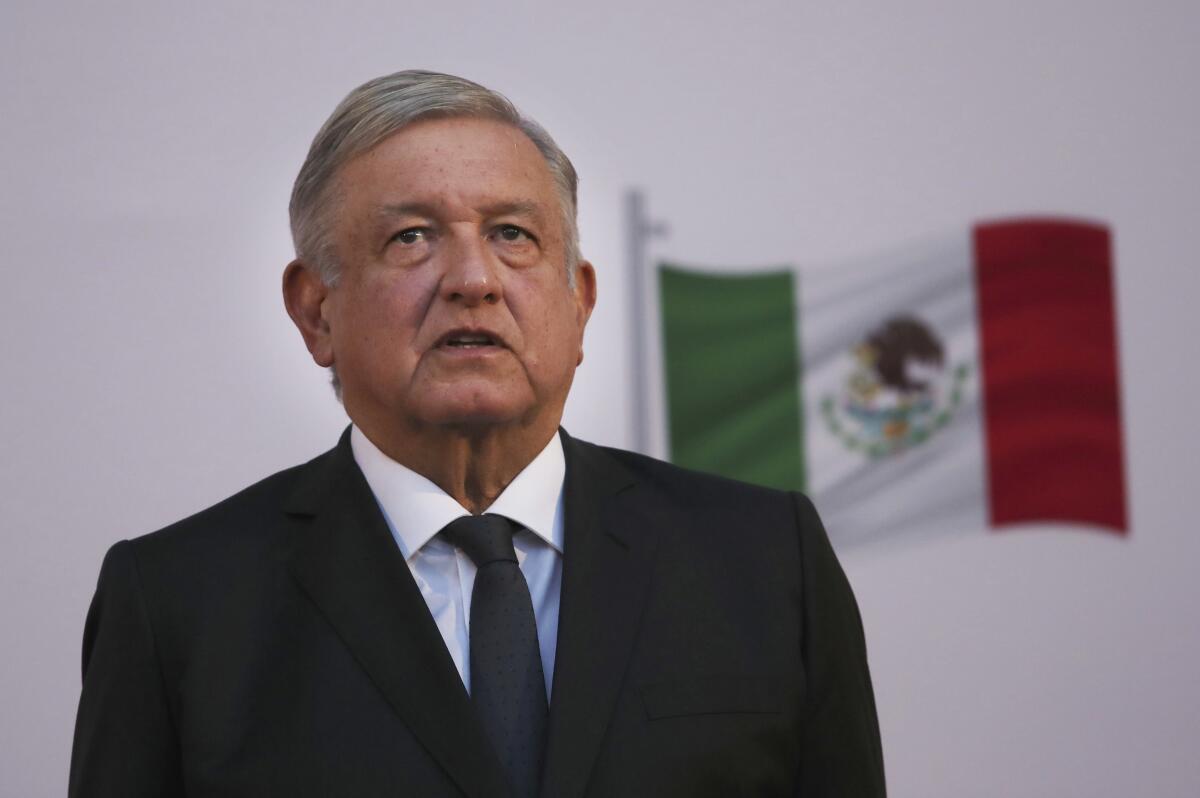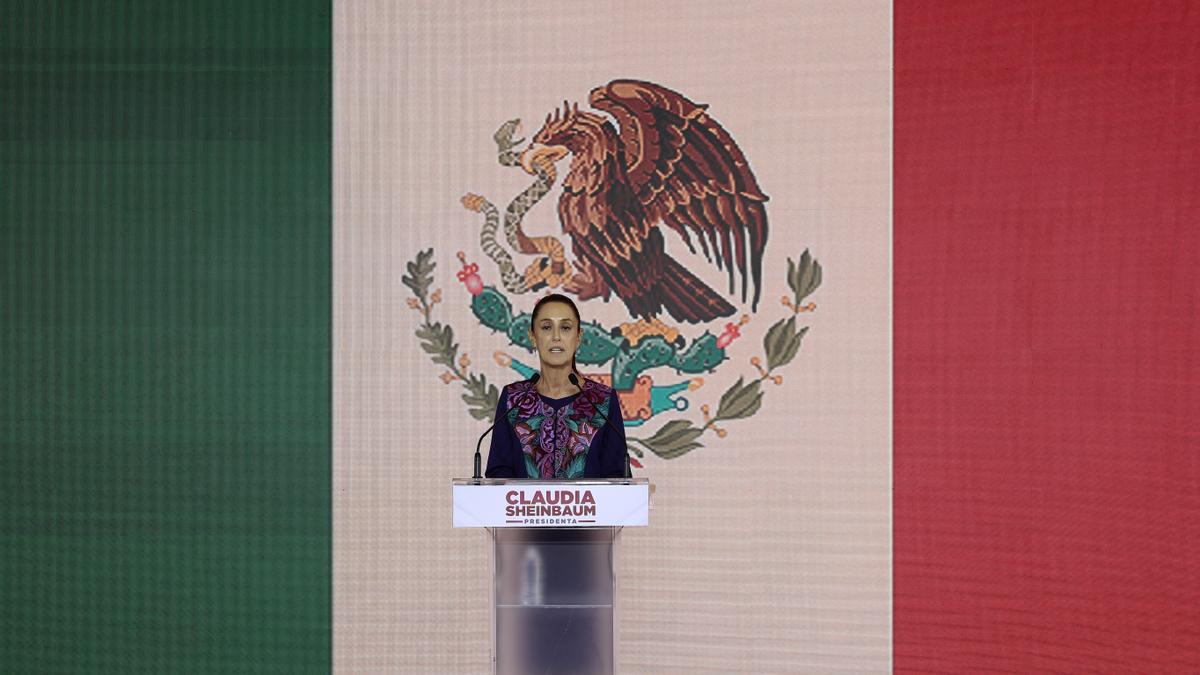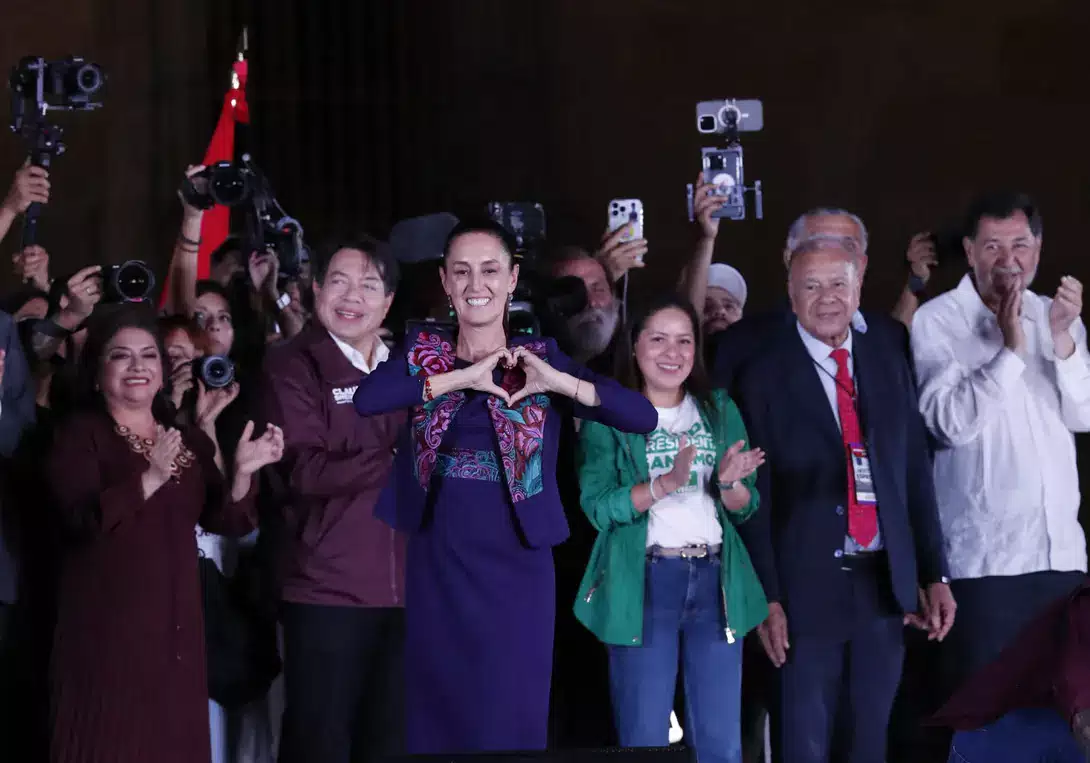Claudia Sheinbaum has been elected as the next president of Mexico, marking the beginning of a new era in the country. With 96.21% of the votes counted, Sheinbaum, candidate of the ruling Morena party, obtained a resounding 59.35% of the votes. This victory places her more than 30 points away from her main competitor, Xóchitl Gálvez, who represented the opposition alliance between the PRI, the PAN and the PRD, and which obtained an average of 27.9% of the votes. In third place, with 10.41% of the votes, was Jorge Álvarez Máynez, from Citizen Movement.
Sheinbaum, who will be the first woman in the history of Mexico to occupy the National Palace, will take office on October 1, succeeding the current president Andrés Manuel López Obrador (AMLO). This triumph for Sheinbaum is not only significant because of her wide margin of victory, but also because of what she represents in terms of political continuity.
To understand the reasons behind this historic victory, it is essential to examine the key factors that led Claudia Sheinbaum to win the election.
Why did Claudia Sheinbaum win the elections?
Popularity of AMLO and the state machinery
Claudia Sheinbaum was greatly benefited by the high popularity of Andrés Manuel López Obrado r (AMLO), with whom she shares political alliances. The president's endorsement, which has a 60% approval level, exerted a positive influence on Sheinbaum's candidacy, further consolidating her support.
Furthermore, Sheinbaum managed to establish two fundamental perceptions in the collective imagination, especially among the popular sectors. First of all, she built a total connection with López Obrador , avoiding any hint of disagreement between them. This association became a guarantee of continuity in policies and the protection of AMLO for those who revere the acting president.
Secondly, she projected an image of seriousness, discipline and scientific competence that generated confidence in many, including the international press. While López Obrador's lack of knowledge did not worry her followers ("she may know little, but she is like us"), Sheinbaum inspired confidence on the contrary ("She has knowledge, she is a professional") .
In addition to this, she benefited from the extensive national network of the ruling party , Morena, and she had the support of the State machinery .
According to Gustavo Urbina, an academic at the College of Mexico, "Since the hegemony of the Institutional Revolutionary Party (PRI), Morena has probably become the most successful party model at the national level."
However, it is important to consider how this scheme will change with the figure of Claudia as AMLO's successor, according to Urbina.
On the other hand, Shifter highlighted AMLO's weight in the nomination of Sheinbaum as a candidate, who, although she won an internal party consultation, was always seen as the president's favorite.
"AMLO's supporters trust her judgment and have come together to support her successor," Shifter stressed.
Finally, it is essential to recognize that there was a significant political operation during the elections in favor of Sheinbaum's option. This political operation, which was not only limited to emotional support for López Obrador, but was also supported by all the government's social programs, was a determining factor in Sheinbaum's success.

An academic profile
Claudia Sheinbaum stands out for her academic profile, very different from that of the president, which has generated a more neutral perception compared to him. While López Obrador can inspire love or animosity, Sheinbaum is seen as a more technical and conversational figure. According to María Eugenia Valdés, an expert in political processes, this difference in styles is key to understanding why Sheinbaum has even managed to surpass her mentor in votes. Valdés points out that López Obrador has generated fear in some political and economic sectors, while Sheinbaum presents a more conciliatory image Dora.
Violeta Vázquez-Rojas highlights Sheinbaum's ability to dialogue with those sectors that felt wronged by the president. This strategy allowed disenchanted people to find in Sheinbaum a figure they could trust and vote for. Specifically, the academic and middle-class vote was attracted to Sheinbaum's less confrontational style, offering a kind of reconciliation with the Fourth Transformation.
Analysts agree that Sheinbaum's conduct has been impeccable. Being a leftist woman, her career was never associated with the PRI or the PAN , which makes her coherent with her principles and linked to social causes. Her experience as a student leader, university professor and researcher, along with her participation in international organizations, give her a modern left-wing image that has benefited her campaign.
On the other hand, the political scientist mentions another factor in favor of Sheinbaum: the support of the party in territorial work. By not having to worry so much about this work, the candidate was able to focus on her message and her proposals, which gave her an additional advantage during the campaign.

Opposition Weakness
The alliance between the PRI, the PAN and the PRD failed to gain the trust of voters. This coalition never achieved full cohesion. However, beyond this, it turned out to be an impossible task to eliminate or at least reduce the deep-rooted discredit of the parties that have governed Mexico since 2000: the National Action Party (PAN) and the former Institutional Revolutionary Party (PRI). This constant reminder of incompetence and corruption, frequently emphasized by Sheinbaum, had a significant impact on Gálvez's campaign, representing an innate and insurmountable obstacle.
The focus of the campaign was on how a victory for the ruling party would weaken the institutions, but the population does not feel loyalty to institutions like the SCJN because in previous governments they did not perceive beneficial results.
Finally, Gálvez made a series of mistakes in a campaign where he could not afford any. Two of these errors are especially notable. First, she failed to respond quickly and effectively to the attacks directed by López Obrador against her integrity and honesty, just after announcing her candidacy. She was accused of illicit enrichment during her previous charges, improperly approving construction permits, and awarding contracts with favoritism. Although Gálvez denied these accusations, she was clearly not prepared to face this onslaught.
Jorge Zepeda Patterson, writer and analyst, highlights a crucial error of the opposition during this period. According to him, the opposition's mortal sin lies in its lack of attention to the "real, current and genuine discontent" of many Mexicans. Zepeda Patterson points out that the opposition's strategy focused on discrediting the current government, showing López Obrador's demagoguery or inefficiency on issues such as violence or access to health.
However, according to Zepeda Patterson, this tactic has not worked because people perceive that, at least, the current government is trying to address these problems, while the traditional parties do not even try. This perception leads the population to maintain their support for the current government, despite its deficiencies, due to the lack of credible alternatives on the part of the opposition.

Social programs
Thesocial programs sponsored by AMLO have been a fundamental piece in the continuous support for the current government. Now, the population enjoys programs that offer around $2,000 pesos, along with average salaries of between $14,000 and $16,000 pesos, marking a notable change from the low minimum wages of the past.
This improvement in the quality of shared life has strengthened loyalty towards the government, while the idea of defending abstract institutions like the SCJN has lost relevance compared to the tangible benefits provided by the government.
Voters act rationally, endorsing what they consider essential to their daily well-being. This was reflected in a pre-election survey, where 64% of respondents receiving official assistance expressed their intention to vote for Sheinbaum.
On the other hand, those not receiving these benefits showed lower support, with Gálvez outperforming Sheinbaum by 11 points. With more than 30 million households benefiting from some form of government aid, this factor could have been decisive in Sheinbaum's victory. Social programs have been a crucial aspect that has shaped the political and electoral landscape.

What other reasons do you think were fundamental for Claudia Sheinbaum to come to power? What are the challenges she has facing her six-year term?

Comentarios